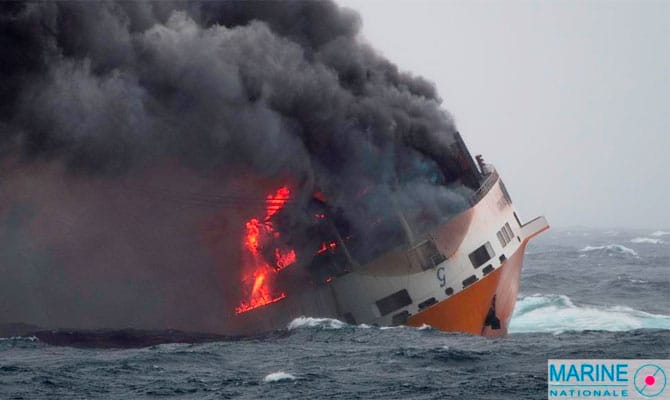Safety, shipping and capital markets
Shipping Industry Faces Mixed Trends in Safety and Shares

Recent findings from Allianz’s annual safety and maritime review for 2024 reveal a significant decline in total losses within the shipping industry. With total losses dropping to 27 this year from 105 in 2015, the industry is showing promise in safety metrics. However, the share prices of major shipping companies have plummeted, highlighting the sector’s ongoing struggles in capital markets.
Safety Improvements Amidst Growing Fleet
Allianz’s report indicates a notable reduction in the number of total losses, which have fallen by 75% over the past decade. The report cites that 681 total losses have been recorded since 2015, with the main causes being sinking (51%), grounding (16%), and fire or explosion (16%). In 2022, the global fleet was estimated at around 140,000 vessels, leading to an annual loss rate of only 0.019%. This figure reflects an overall positive trend, as the shipping industry has made strides in enhancing safety measures.
However, drawing comparisons between shipping and other transport industries remains complex due to fundamental differences. While benchmarking among shipping subsegments shows that the LPG/LNG sector has achieved zero total losses for five consecutive years, the tanker segment has seen two total losses per year. Beyond total losses, there has been an increase in insurance claims exceeding $1 million. In 2024, there were 3,310 incidents reported, a 20% rise from 2014, with nearly 60% linked to machinery damage or failure. This divergence raises questions about the aging global merchant fleet and its impact on incident rates.
Struggles in Capital Markets
Despite advancements in safety, the financial outlook for shipping companies remains bleak. Major players in the sector have seen dramatic declines in their share prices. Star Bulk Carriers has dropped 99% since its IPO, while Diana Shipping and Navios Maritime Holdings have seen decreases of 89% and 78%, respectively. In contrast, tanker companies are faring slightly better, with Scorpio Tankers down 60% and TEN down 44%. However, DHT Holdings has experienced a staggering 92% decline, mirroring trends in the dry bulk sector.
stock market indices have surged during the same period, with the DJIA increasing fourfold and the NASDAQ rising tenfold since 2010. The stark contrast between shipping’s performance and broader market trends underscores the cyclical nature of the industry, which often struggles to align with the expectations of capital markets that prioritize quarterly reporting. As the shipping sector continues to navigate these challenges, the future remains uncertain.
